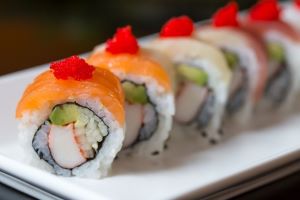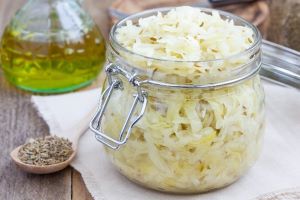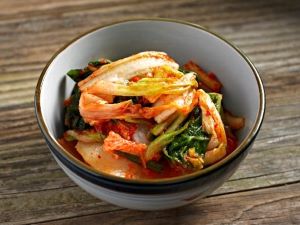Food Additives

The use of food additives, such as vinegar, as a method to preserve food or alter the food so that it no longer requires refrigeration requires a Hazard Analysis Critical Control Point (HACCP) plan and a variance. This process of lowering the pH can potentially change the characteristics of food to make it shelf-stable or allow the fermentation process to safely occur outside of refrigeration. However, if this process is not done properly, it can lead to foodborne illnesses. A HACCP plan is required to help reduce or eliminate the risk of these potential hazards.
Acidification
An acid can be added to a food product for both flavor purposes or as a method of preservation. Acidification is a preservation technique or process of adding an acid to food to control the growth of undesirable microorganisms, including pathogens, to lower the pH.
 Acids such as vinegar or lemon juice are commonly used to lower the pH. In most instances, the critical control point of the HACCP plan is to monitor the pH to verify it is low enough to prevent bacteria from growing out of refrigeration. Foods such as rice mixed with vinegar used for sushi is a common technique to allow the rice to sit out at room temperature for extended periods of time during the production process. Also, acids are commonly used in the canning process to allow foods to safely be stored in an airtight sealed container.
Acids such as vinegar or lemon juice are commonly used to lower the pH. In most instances, the critical control point of the HACCP plan is to monitor the pH to verify it is low enough to prevent bacteria from growing out of refrigeration. Foods such as rice mixed with vinegar used for sushi is a common technique to allow the rice to sit out at room temperature for extended periods of time during the production process. Also, acids are commonly used in the canning process to allow foods to safely be stored in an airtight sealed container.
Fermentation
 Fermentation is a preservation technique. It is a natural process through which microorganisms like yeast and bacteria convert carbohydrates, such as starch or sugars, into alcohols or acids. Common fermented foods include sauerkraut, cheese, kombucha, kimchi, yogurt, beer, wine, sourdough bread, and many others.
Fermentation is a preservation technique. It is a natural process through which microorganisms like yeast and bacteria convert carbohydrates, such as starch or sugars, into alcohols or acids. Common fermented foods include sauerkraut, cheese, kombucha, kimchi, yogurt, beer, wine, sourdough bread, and many others.
Foods that do not require refrigeration, or non-time/temperature control for safety foods, prior to the fermentation process do not need a HACCP plan. Products such as beer, wine, kombucha and sourdough bread can be made safely without added procedures. However, foods that do require refrigeration for safety or time/temperature control for safety (TCS) food will require a HACCP plan, such as sauerkraut, kimchi, and yogurt.

Generally, fermentation takes place over several days at ambient or room temperatures. For foods that require refrigeration prior to the fermentation process, certain conditions need to be met to ensure the food is safe throughout the process. These products can be made safely without a HACCP plan under refrigerated conditions but would be constricted by other limitations such as limiting shelf life to no more than 7 days under the Minnesota Food Code.
In most instances, the critical control point of the HACCP plan is to monitor the pH to verify it is low enough to prevent bacteria from growing. This allows the TCS ingredients to sit out of refrigeration for extended periods of time during the fermentation process. Once the product is fermented it would then likely require refrigeration but is exempt from the 7-day datemarking requirement. If the product is canned or held at ambient temperatures it would require a process authority to determine whether the food is shelf-stable. The process authority would evaluate the entirety of the process for shelf stability.
pH Meters
A pH meter is a common tool to measure the acidity of a food product. A pH meter must be calibrated before use against buffer solutions of known pH values, typically around 4 and 7. This process should be outlined within the HACCP plan and followed each time a pH is measured.

